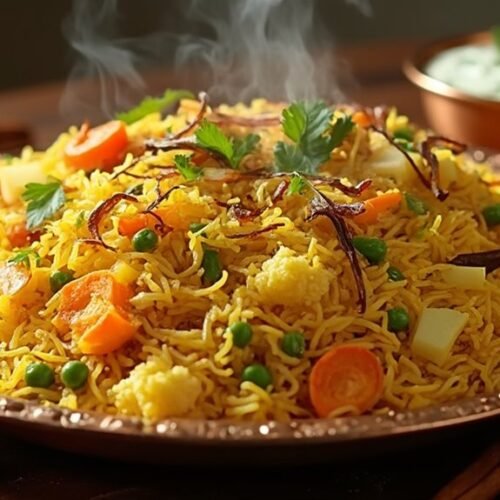Reviving Rusty Cast Iron: A Complete Restoration Guide
Discovered an old rusty cast iron pan hiding in your cupboard or at a yard sale? Don't toss it! That orange coating is just a minor setback on what could be decades more of delicious cooking. As Lodge Cast Iron confirms, "Surface rust can be easily removed and does not affect the pan's ability to be used and seasoned." Let me show you how to transform that neglected cookware into your kitchen's most valuable player—using items you likely already have at home.
Why Restore Your Rusty Cast Iron?
Cast iron cookware is practically indestructible—that's why people can still cook with pans that are over 100 years old! These kitchen workhorses offer unmatched heat retention, natural non-stick properties when properly seasoned, and even add beneficial iron to your food. A little rust doesn't change any of these fantastic qualities; it just needs some TLC to reveal them again.
Essential Rust Removal Tools
- Steel wool or stiff brush
- Mild dish soap
- Baking soda
- White vinegar
- Lint-free cloths or paper towels
- Cooking oil (with high smoke point)
- Patience and a bit of elbow grease
The Cast Iron Restoration Process: Step-by-Step
- Initial Scrub: Use steel wool or a stiff brush to remove surface rust. Don't be afraid to apply some pressure!
- Wash Thoroughly: Clean with warm, soapy water to remove rust particles and residue.
- Tackle Stubborn Spots: For persistent rust, create a paste with equal parts baking soda and water, apply to problem areas, and let sit for 15-20 minutes before scrubbing again.
- Vinegar Soak (for severe rust): Create a 1:1 solution of white vinegar and warm water. Soak pan for 1-8 hours, checking regularly—don't leave it too long or the vinegar might damage the iron!
- Rinse and Dry Completely: Wash away all cleaning agents, then dry thoroughly with towels. Place on stovetop over low heat to ensure absolutely no moisture remains.
- Season Immediately: Apply a thin layer of high smoke point oil (like vegetable, canola, or flaxseed) to the entire surface—inside, outside, handle and all.
- Bake the Seasoning: Place the pan upside down in an oven at 450-500°F for one hour (put a baking sheet on the rack below to catch any drips).
- Cool Completely: Allow the pan to cool in the oven before storing to prevent condensation and new rust.
Pro Methods for Different Rust Levels
| Rust Level | Recommended Method | Time Required |
|---|---|---|
| Light Surface Rust | Steel wool scrubbing + dish soap | 15-30 minutes |
| Moderate Rust | Baking soda paste treatment | 30-60 minutes |
| Heavy Rust | Vinegar soak followed by scrubbing | 2-8 hours |
| Severe/Deep Rust | Multiple vinegar soaks + electrolysis (for enthusiasts) | 1-2 days |
Critical Mistakes to Avoid
When restoring cast iron, avoiding these common errors will save your cookware from potential permanent damage:
- Harsh Chemical Cleaners: Commercial rust removers can damage both the rust AND your pan.
- Dishwasher Cleaning: This strips seasoning and accelerates rusting—always hand wash!
- Excessive Soaking: Never leave cast iron in water for extended periods.
- Applying Too Much Oil: During seasoning, less is more—thick layers create sticky, uneven surfaces.
- Improper Storage: Store in dry places with good air circulation; consider placing paper towels between stacked pans.
- Skipping Re-seasoning: Always re-season after rust removal to create a protective barrier.
Maintaining Your Restored Cast Iron
Once you've rescued your pan from rust, keep it performing beautifully with these simple practices:
- Clean while still warm (not hot) using hot water and a stiff brush
- Avoid soaking and prolonged exposure to water
- Dry immediately and thoroughly after each cleaning
- Apply a very thin layer of oil after each use
- Store in a dry place with good air circulation
- Use regularly—cast iron improves with use!
"Cast iron skillets are resilient kitchen workhorses – a bit of rust is just a minor setback on the path to cooking perfection."
Why It's Worth the Effort
Restoring a rusty cast iron pan takes some work, but the reward is decades more of superior cooking performance. Unlike modern non-stick cookware that needs replacement every few years, your revived cast iron will continue improving with age. Plus, there's something deeply satisfying about rescuing a quality piece of cookware that might otherwise have been discarded.
The beauty of cast iron restoration is that it's forgiving—even if your pan has been neglected for years, with patience and the right techniques, you can bring it back to its former glory. Your efforts will be rewarded with perfect sears on steaks, evenly baked cornbread, and countless memorable meals for years to come.
Remember: That rusty old pan isn't just cookware—it's a kitchen heirloom waiting to be rediscovered. Happy restoring!
For more detailed cleaning and restoration guides, visit cleanrestoreconnect.com.
